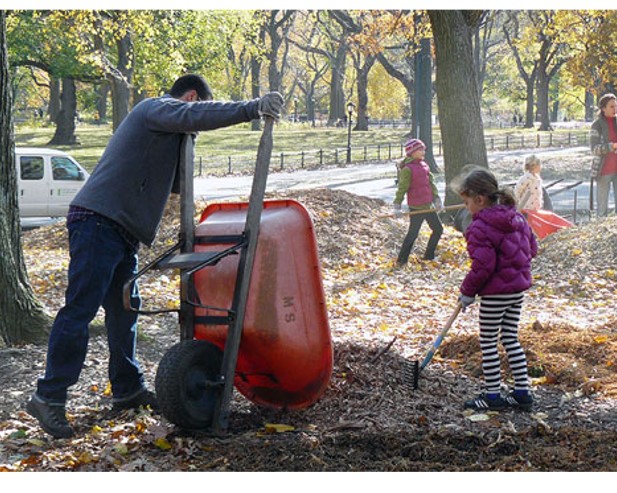Blog: Family Volunteering – All Together Now!

November 20, 2021 is Family Volunteer Day – a global day of service that celebrates the power of families who work together to support their communities and neighborhoods. For generations, parents and their children have responded to the needs of neighbors, organizations, and their community by rolling up their sleeves and working together. Whether informally, such as making a meal for a sick neighbor, or formally, such as organizing a food drive for a local charity, families have come together to make a difference. Yet, this year is a bit different.
As Points of Light notes, “This year, the needs are greater than ever before. And though volunteering may look different, there are still so many ways to give back.”
When organizations engage families, the benefits add up to far more than just the cans of food collected, the trees planted, or the cheerful cards delivered to the senior center. When organizations strategically engage families as volunteers, the organizations, the families, and even the community at large benefit. Organizations benefit from extra hands helping to drive mission fulfillment and greater awareness of their work; the families gain skills and valuable time together (not to mention the satisfaction of making a difference and connecting with others); and the community is strengthened through their contributions.
Whether you have a longstanding tradition of engaging families at your organization or are just beginning to consider it, now is a good time to think about it. How can you get started? By developing a “Family Volunteer Philosophy,” which can serve as your guide and “yardstick” against which you will measure your family volunteering activities.
Here are some questions to get you started on developing a philosophy:
- What is your organization’s mission?
- What does your team believe about families and their potential to serve?
- What does your team value about families and volunteers?
- What’s the difference family volunteering could make:
- For your organization and the people it serves?
- For the families?
- For the community?
Use these answers to develop a list of four to six core values to guide your work in enhancing family volunteering at your organization. Be brief and avoid jargon.
1.
2.
3.
4.
5.
6.
Here are some examples of family volunteering values that have emerged from this exercise:
- We are committed to providing families with meaningful opportunities to serve.
- We believe that individuals have something tangible to offer—and to learn—from serving as family volunteers.
- We believe that family volunteering is a portal for families to strengthen their relationship with our organization
Next, identify some opportunities. Families seek many things in a volunteering experience. Among those things is purpose. Purpose implies that the work is meaningful, rather than “busy work.” Families easily recognize busy work and are generally not interested in it. If their first volunteer experience at an organization is built around busy work, that is often their last volunteer experience with that organization. To identify opportunities, consider the programs and client services you currently offer as well as upcoming planned events (or events that you wish you could implement). Don’t forget to look at your “wish list” of things you’d like to do but have not yet had time or capacity to do.
Then, review that list to determine which of these could be adapted to be a family friendly volunteer opportunity. Family friendly opportunities have purpose, can be explained simply, promote collaboration, allow for creativity, encourage cross-generational communication, and strengthen relationships within the family.
Here are a few ideas that can safely be achieved (though be sure to confirm which can be safely achieved amid the current COVID-related safety protocols in your organization and community):
Social Service Agencies: Families can organize food drives, unload and shelve donations to a pantry or help with drive-through distributions of food packages, raise funds by organizing family-friendly events, and host information sessions at their homes, schools, or online to educate others about the pressing needs in their own communities.
Community Centers: Families can help with facilities projects like building or painting playground, prepare or deliver meals to seniors, tutor children, or brainstorm, plan, and run events to bring new members to the Center.
Farms and Community Supported Agriculture: Families can tend crops and harvest food to be donated to a local food pantry, thus helping the environment, learning new skills, learning about issues related to hunger, and feeding the hungry all at the same time.
Museums and Cultural Organizations: Families can serve as tour guides, interpreters, greeters, or program ushers.
Remember, a family can be many things. When it comes to volunteering, a family can be any group of two or more people who define themselves as a family. A family could be a parent and child, two children with their aunt, a grandfather with his grandchildren, a mentor through the Big Brother/Big Sister program with her “little sister,” or even a group of adult siblings who choose to volunteer together as a family.
Finally, consider how you can transform this Global Family Volunteering Day into an ongoing relationship with families by bridging this day of service to other opportunities. Check out our “Transforming Days of Service into Ongoing Engagement” tool and other templates to help you plan. How can you engage families to make a difference for your mission?
